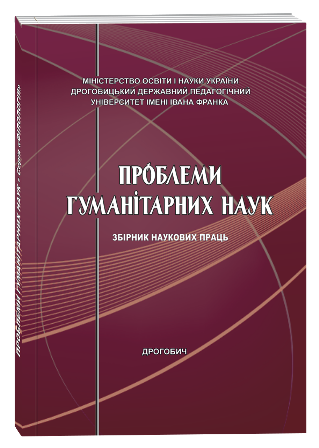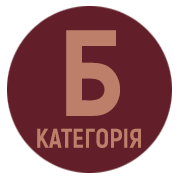FEATURES OF THE IMPLEMENTATION OF THE WING CONCEPT IN LITERARY AND ARTISTIC TEXTS (BASED ON THE MATERIALS OF THE WORKS OF FOREIGN AND UKRAINIAN WRITERS)
DOI:
https://doi.org/10.24919/2522-4565.2022.51.8Keywords:
angels, wings, spiritual potential, philosophical symbol, humanistic orientation.Abstract
Summary. On the example of the image of wings, changes in the perception of concepts with archetypal connotations can be traced. Decreased attention to man as a bearer of inner wealth in the industrial world leads to the disappearance of faith in the supernatural, devaluation of the concept of a higher purpose and spiritual potential. In most world cultures human imagination created creatures with wings as the embodiment of the eternal desire to fly, to the sky, to the heights of spirituality. Ancient Greek Eros and the horse Pegasus, biblical angels, elves in W. Shakespeare’s plays and H. Andersen’s fairy tales represent love, creative inspiration, good news and God’s blessing, and the beauty and fragility of nature, respectively. The revaluation and devaluation of priorities in the culture of the 20th century leads to a change in emphasis in the perception of this symbol. We will try to trace the peculiarities of the implementation of the concept of wings in works of Ukrainian and world literature, prose and poetry. Let’s compare the portraits, the reasons for the appearance and the meaningful content of the images of winged creatures in two works of a bright representative of magical realism by H. Marquez (the novel “One Hundred Years of Solitude” and the short story “The Old Man with Wings”), the story of the outstanding fiction writer H. Wells “The Amazing Visit”, the ballad of I. Drach “Wings” and the story of the neorealist A. Dimarov “Wings”. The work of H. Wells was written in 1895, but we include it in the same era as other works, since we consider the 20th century not according to the calendar, but from the point of view of the philosophy of alienation prevailing at that time. These trends emerged at the end of the 19th century together with a number of scientific discoveries, and gained particular sharpness in the art of the second half of the 20th century.
References
Драч І. Вірші та поеми. Київ : Дніпро, 1991. 213 с.
Дімаров А. Боги на продаж : міські історії. Київ : Радянський письменник, 1988. 512 с.
Комариця М. Християнсько-міфологічна інтерпретація крила в українській поезії. Народна творчість та етнографія. 2004. № 6. С. 58.
Маркес Г. Сто лет одиночества. Полковнику никто не пишет. Москва: Правда, 1986. 480 с.
Маркес Г. Стариган з крилами. Зарубіжна проза ІІ половини ХХ сторіччя: новели, повісті, притчі (уклад. Д. В. Затонський). Посібник для 11 класу загальноосвітніх навчальних закладів. Київ : «Навчальна книга», 2002. 319 с.
Тресилдер Дж. Словарь символов. URL : http:// www.gumer.info/bibliotek_Buks /Culture/JekTresidder/ index.php.
Уэллс Г. Чудесное посещение. Собрание сочинений в 15-ти томах. Том 5. Москва : «Правда», 1964. URL : http://lib.ru/INOFANT/UELS/wndvisit.txt.
Холл Дж. Словарь сюжетов и символов в искусстве. Москва, 1999. URL : http://www.gumer.info/ bibliotek_Buks/Culture/holl/index.php.



